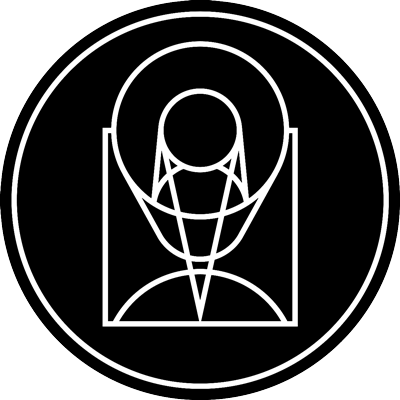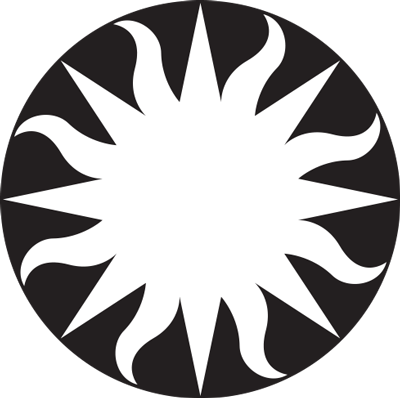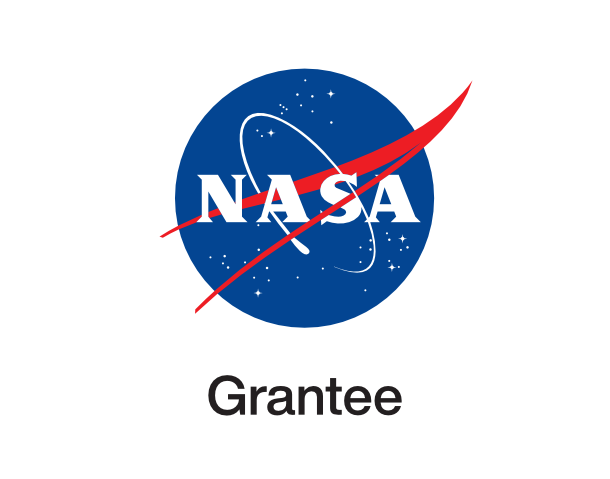Rings and Moons Circling Uranus

stsci_2004-05a January 22nd, 2004
Credit: NASA/ESA and Erich Karkoschka, University of Arizona
This wider view of Uranus reveals the planet's faint rings and several of its satellites. The area outside Uranus was enhanced in brightness to reveal the faint rings and satellites. The outermost ring is brighter on the lower side, where it is wider. It is made of dust and small pebbles, which create a thin, dark, and almost vertical line across the right side of Uranus (especially visible on the natural-color image). The bright satellite on the lower right corner is Ariel, which has a snowy white surface. Five small satellites with dark surfaces can be seen just outside the rings. Clockwise from the top, they are: Desdemona, Belinda, Portia, Cressida, and Puck. Even fainter satellites were imaged in deeper exposures, also taken with the Advanced Camera in August 2003.
Provider: Space Telescope Science Institute
Image Source: https://hubblesite.org/contents/news-releases/2004/news-2004-05
Curator: STScI, Baltimore, MD, USA
Image Use Policy: http://hubblesite.org/copyright/
 Color Mapping
Color Mapping
| Telescope | Spectral Band | Wavelength | |
|---|---|---|---|

|
Hubble (ACS) | Optical | 435.0 nm |

|
Hubble (ACS) | Optical | 550.0 nm |

|
Hubble (ACS) | Optical | 658.0 nm |

|
Hubble (ACS) | Optical | 660.0 nm |

|
Hubble (ACS) | Optical | 775.0 nm |

|
Hubble (ACS) | Optical | 814.0 nm |

|
Hubble (ACS) | Optical | 850.0 nm |

|
Hubble (ACS) | Optical | 892.0 nm |

|
Hubble (STIS) | Optical | 430.0 nm |

|
Hubble (STIS) | Optical | 750.0 nm |












- ID
- 2004-05a
- Subject Category
- A.1.1.2
- Subject Name
- Uranus
- Credits
- NASA/ESA and Erich Karkoschka, University of Arizona
- Release Date
- 2004-01-22T00:00:00
- Lightyears
- 3.10e-4
- Redshift
- 3.10e-4
- Reference Url
- https://hubblesite.org/contents/news-releases/2004/news-2004-05
- Type
- Planetary
- Image Quality
- Good
- Distance Notes
- Distance from Sun in miles: 1800000000
- Facility
- Hubble, Hubble, Hubble, Hubble, Hubble, Hubble, Hubble, Hubble, Hubble, Hubble
- Instrument
- ACS, ACS, ACS, ACS, ACS, ACS, ACS, ACS, STIS, STIS
- Color Assignment
- Band
- Optical, Optical, Optical, Optical, Optical, Optical, Optical, Optical, Optical, Optical
- Bandpass
- Central Wavelength
- 435, 550, 658, 660, 775, 814, 850, 892, 430, 750
- Start Time
- Integration Time
- Dataset ID
- Notes
- Coordinate Frame
- ICRS
- Equinox
- Reference Value
- 332.89501250, -12.02069722
- Reference Dimension
- Reference Pixel
- Scale
- Rotation
- Coordinate System Projection:
- Quality
- Position
- FITS Header
- Notes
- Creator (Curator)
- STScI
- URL
- http://hubblesite.org
- Name
- Space Telescope Science Institute Office of Public Outreach
- outreach@stsci.edu
- Telephone
- 410-338-4444
- Address
- 3700 San Martin Drive
- City
- Baltimore
- State/Province
- MD
- Postal Code
- 21218
- Country
- USA
- Rights
- http://hubblesite.org/copyright/
- Publisher
- STScI
- Publisher ID
- stsci
- Resource ID
- STSCI-H-p0405a-f-450x600.tif
- Resource URL
- https://mast.stsci.edu/api/latest/Download/file?uri=mast:OPO/product/STSCI-H-p0405a-f-450x600.tif
- Related Resources
- http://hubblesite.org/newscenter/archive/releases/2004/05
- Metadata Date
- 2022-09-07T00:00
- Metadata Version
- 1.2
Detailed color mapping information coming soon...







